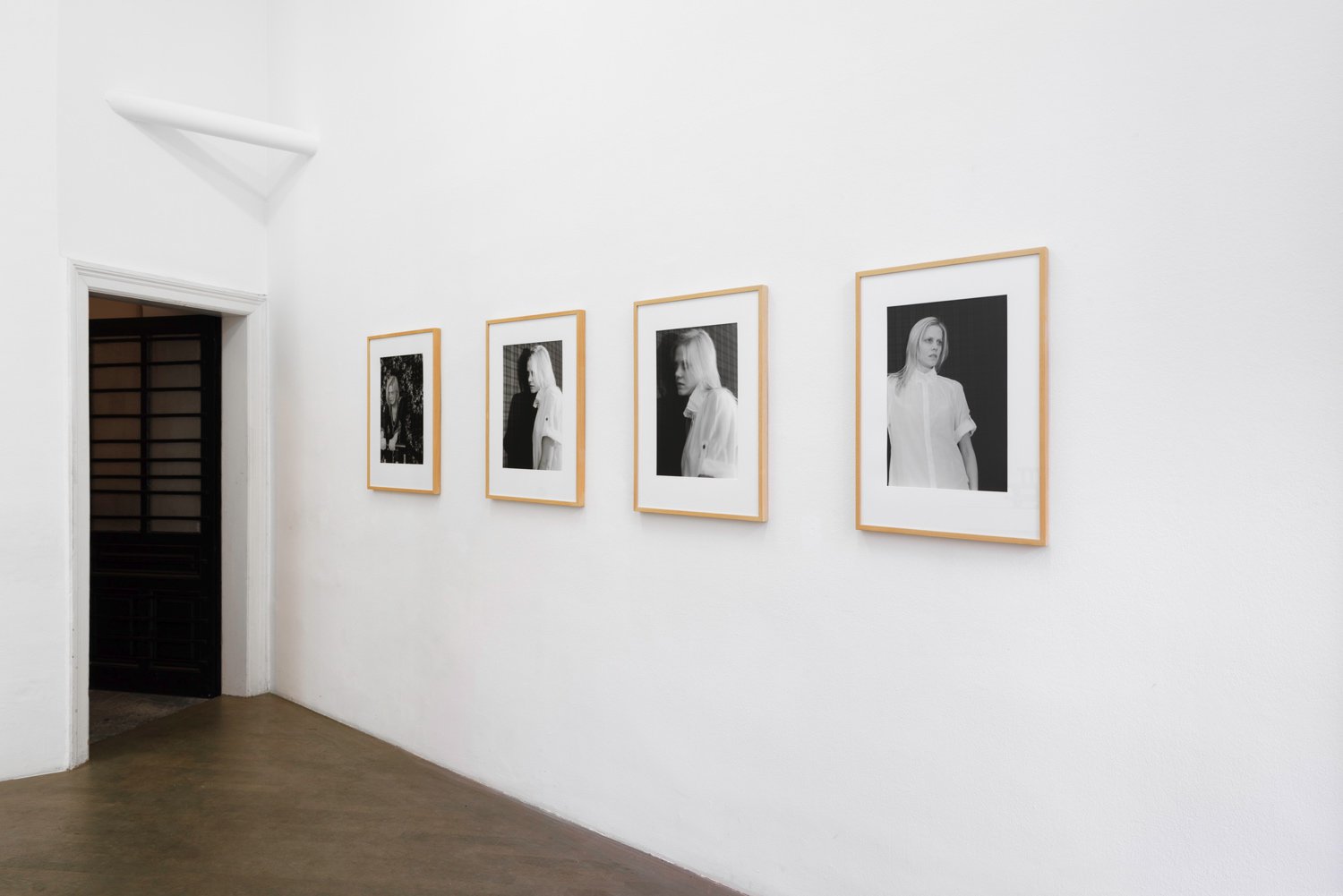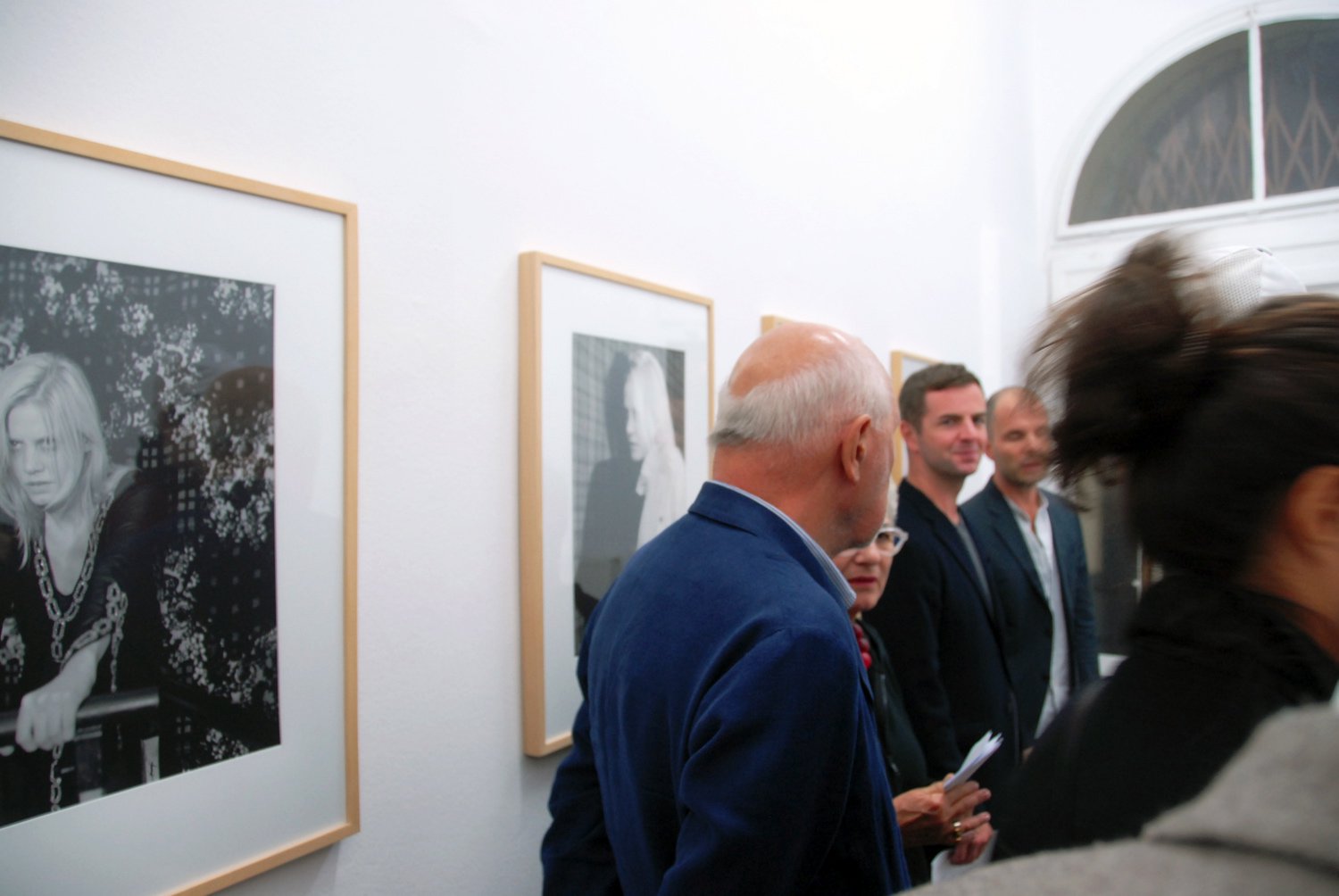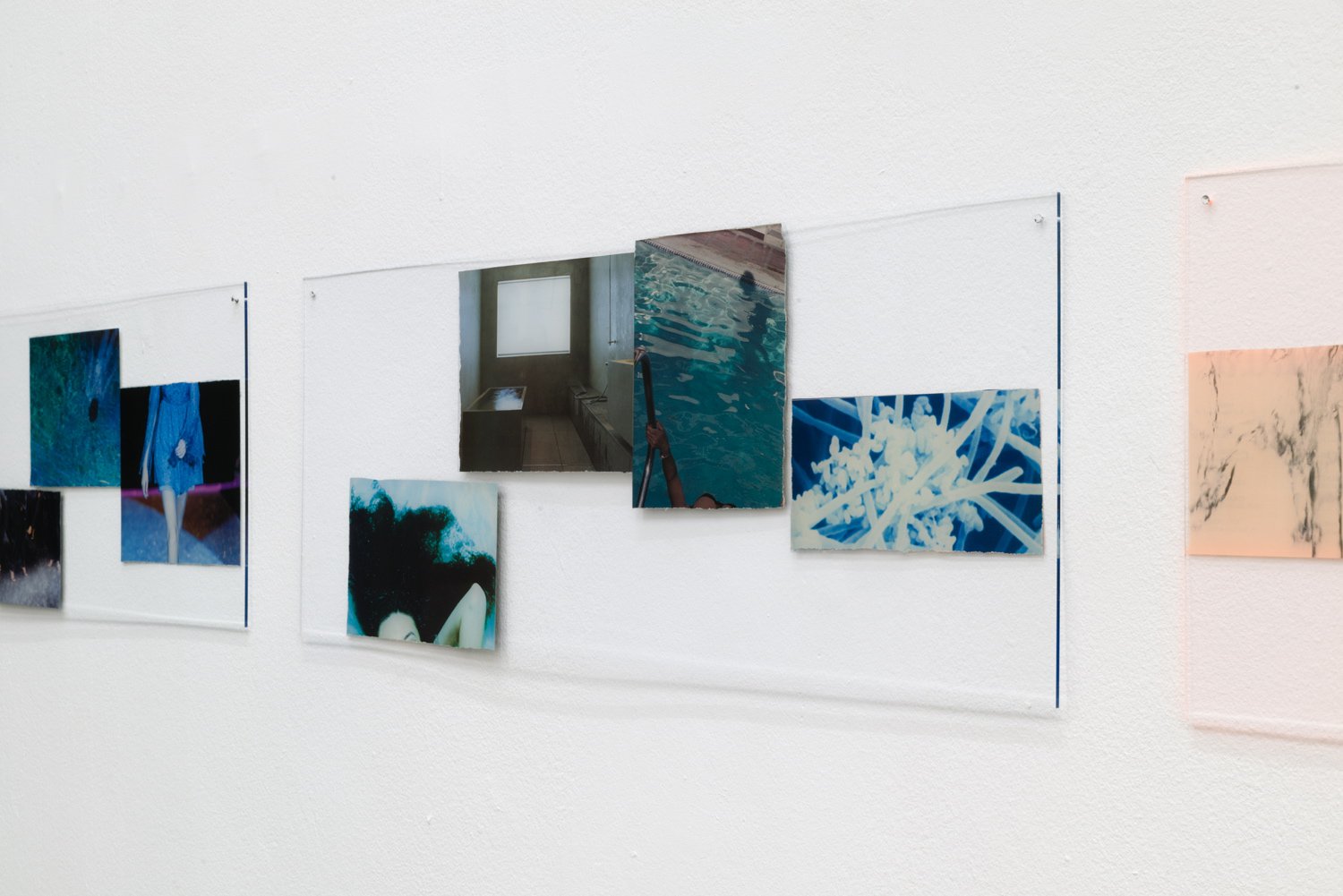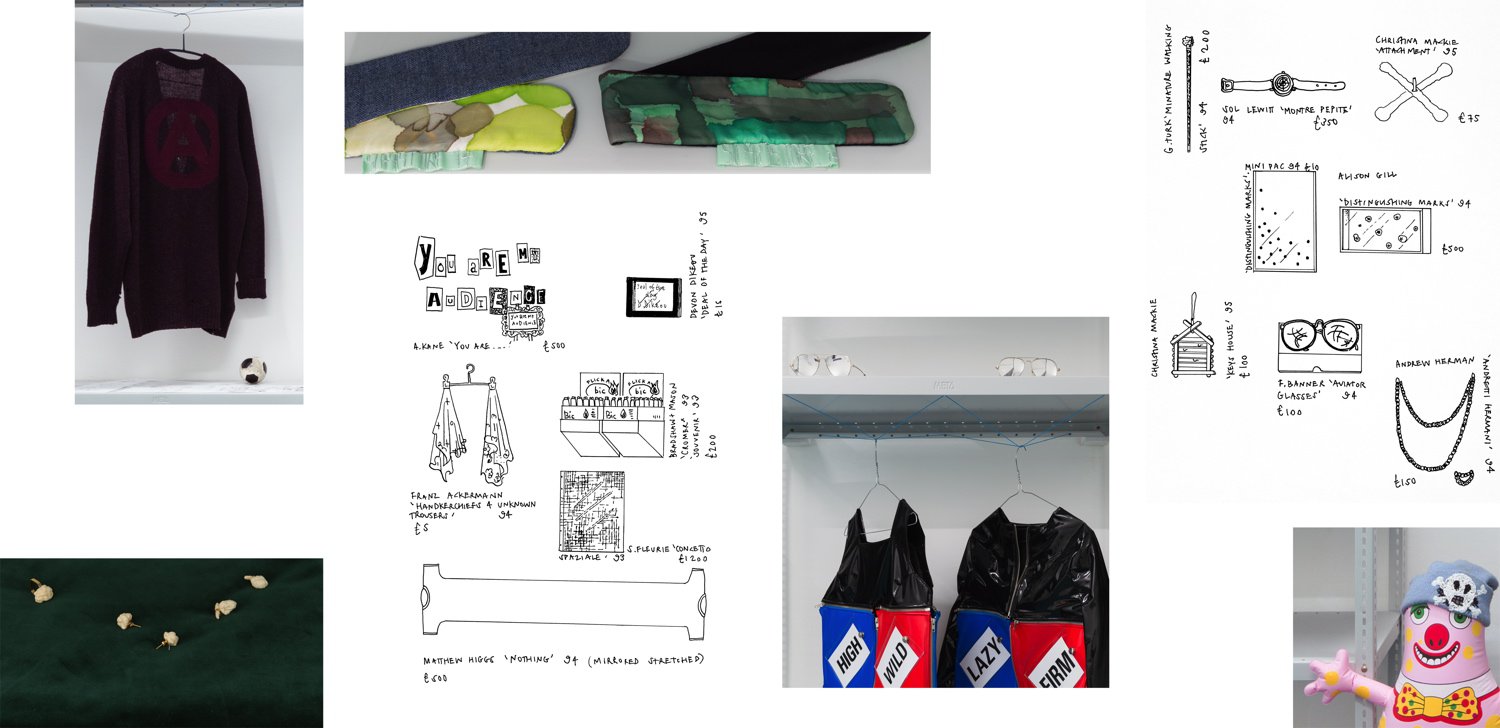An der Hülben
The Century of the Bed
Dominique Gonzalez-Foerster, Morag Keil, Mélanie Matranga, Bonny Poon, Josephine Pryde, Sarah Staton
Curated by Festival / curated by Egija Inzule
October 2 – November 13, 2014

The Century of the Bed, 2014
Installation view
Layr An der Hülben, Vienna

Josephine Pryde
Self-doubt, 2007-2009
Silber gelatin print
48.5 × 35 cm

Josephine Pryde
Tendresse, 2007-2009
Silber gelatin print
48.5 × 35 cm

Josephine Pryde
Ambivalence, 2007-2009
Silber gelatin print
48.5 × 35 cm

Josephine Pryde
Frustration, 2007-2009
Silber gelatin print
48.5 × 35 cm


The Century of the Bed, 2014
Installation view
Layr An der Hülben, Vienna

The Century of the Bed, 2014
Installation view
Layr An der Hülben, Vienna

Ellen Cantor
My Future Wife, 2008

The Century of the Bed, 2014
Installation view
Layr An der Hülben, Vienna


The Century of the Bed, 2014
Installation view
Layr An der Hülben, Vienna

The Century of the Bed, 2014
Installation view
Layr An der Hülben, Vienna

The Century of the Bed, 2014
Installation view
Layr An der Hülben, Vienna


The Century of the Bed, 2014
Installation view
Layr An der Hülben, Vienna

The Century of the Bed, 2014
Installation view
Layr An der Hülben, Vienna

The Century of the Bed, 2014
Installation view
Layr An der Hülben, Vienna

The Century of the Bed, 2014
Installation view
Layr An der Hülben, Vienna

The Century of the Bed, 2014
Installation view
Layr An der Hülben, Vienna

The Century of the Bed, 2014
Installation view
Layr An der Hülben, Vienna

The Century of the Bed, 2014
Installation view
Layr An der Hülben, Vienna

The Century of the Bed, 2014
Installation view
Layr An der Hülben, Vienna

The Century of the Bed, 2014
Installation view
Layr An der Hülben, Vienna

The Century of the Bed, 2014
Installation view
Layr An der Hülben, Vienna


The Century of the Bed, 2014
Installation view
Layr An der Hülben, Vienna

The Century of the Bed, 2014
Installation view
Layr An der Hülben, Vienna

Cerith Wynn Evans
Death Factory, 1997
T-shirt, framed print
Excerpts from How They Met. Part 1: Mother and Her House SupaStore The Issues of Our Time (1 & 3) Fille/Garçon In the Middle of Affairs with Dominique Gonzalez-Foerster, Morag Keil, Mélanie Matranga, Bonny Poon, Josephine Pryde, Sarah Staton
Excerpts From How They Met. Part 1: Mother and Her House, SupaStore, The Issues of Our Time (1&3), Fille/Garçon, In the Middle of Affairs is a group exhibition based on “remakes” of preexisting exhibitions with works by artists Dominique Gonzalez-Foerster, Morag Keil, Mélanie Matranga, Bonny Poon, Josephine Pryde and Sarah Staton. Curator Egija Inzule selected and brought them together as her contribution to Vienna’s annual curated_by festival.
The original exhibitions came from different languages, spaces, contexts and times. Within this “thinking through exhibitions,” the miniature shows are listed one after the other (along with corresponding material, such as original press releases and ephemera), in the four separate gallery rooms of the Gallerie Emanuel Layr. To insist on quoting the context of a work’s “original” exhibition can be seen as an exaggeration thought to underline the specific social relations, situations and conditions that frame the artworks and modes of working and which define the reasons for the artworks’ and working approaches specific forms.
How They Met. Part 1: Mother and Her House and Part 2: Sex was a collaborative project by the artists Josephine Pryde and Sarah Staton, presented in form of two exhibitions simultaneously on view at Galerie Bleich-Rossi and the Gabriele Senn Galerie in Vienna in 2008. The artists’ central themes of their exhibition – how they got together, how they started to know each other, and where they came from – were meant to refer to the social relations running through art practices. In their press text in 2008, when referring to the “results” of their collaboration and re-viewing it they wrote: “Now, thankfully at last fully socialised, they review the tropes. How feeble were they? Why attempt to establish a working partnership? Even as a fake? Now? Where can you drive the autobiographical? Where will it drive you? What does the labour that is self-knowledge look like anyway.”
The Issues of Our Time (1&3) was part of a series of three exhibitions put together by the team of the exhibition space castillo/corrales. Parts 1 and 2 took place in the exhibition space in Paris in 2013, while part 3 was conceived for the event-based program of Artists Space Books & Talks in New York City in 2014. Part 3 included a carpet with cables running underneath it, designed by artist Mélanie Matranga, among other elements and artworks specifically conceived as stage and backdrop for the two-week public program. The Issues of Our Time series began with discussions about approaches to the thinking and making of art that were described as the dynamics of self-portraiture through projection. The exhibition generated a kind of fluent whole, based on separate works by different authors.
Within the space of The Issues of Our Time (1&3) another exhibition (also co-curated by Egija Inzule) In the Middle of Affairs (Künstlerhaus Stuttgart: 2010) was mentioned, more as a footnote. Within the context of this exhibition the artist Bonny Poon performed her Re-Enactment of The Cool-Down, Body Movement Workshop (help for breathing and bending). The performance and the installation consisted of water bottles by an internationally-known Austrian brand and white exercise towels, as a trace in the space, a brand of the artist herself, a tag of an artwork almost invisible, but simultaneously inscribed in many attitudes and gestures of the gallery and the exhibtion’s everyday lifestyle.
The exhibition Fille/Garçon was a solo gallery show by the artist Dominique Gonzalez-Foerster realized in 1995 at Gallery Koyanagi in Tokyo. The installation was an homage to the sentō, the Japanese public bath. Gonzalez-Foerster captured its emblematic formats: including a gender based colour-split of the space – baby blue and pink. Previously gender-mixed, separate bathing was introduced in Japan during 1868–1912, a time of modernization and westernization. Further elements in Gonzalez-Foerster’s installation adopted from the sentō were little wooden chairs and buckets, low mirrors (here represented as baby blue and pink tinted acrylic glass plates: story-boards with cut-out magazine collages). The middle of the space is filled with a large tiled area in the same colour-split code, a baby blue and pink reference to Carl Andre’s work Steel-copper plain (1969), here as a signifier for the sentō hot tub. A text by Benjamin Weil that accompanied the two parts of the exhibition – “The first part goes with the pink side, the second with the blue” – describes the many notions, including the cinematic perspective of this work, discussing “intimacy within the public place where one is exposed and simultaneously protected by convention. It occurs in a particular type of time frame: the body takes over the mind”.
Sarah Staton’s SupaStore was an art-translation-of-fashion pop-up store, a seven-year project that the artist ran from 1993–2000. Light gestures and works by artists, made specifically for the “store” context, were installed to resemble and mimic what fashion does and how fashion and shopping circulates. SupaStore was a pre-internet hub, materialized in a collection of smaller objects, or things with a definable “use”. The project was backed up by the strongly-developing notion of shopping: “Shopping is melting into everything and everything is melting into shopping.” (The Harvard Guide to Shopping: 2001) The re-enactment in Vienna of Sarah Staton’s SupaStore, entitled SupaStore/Sleep 2014, includes excerpts from SupaStore Boutique (1994), SupaStore NYC (1997) and SupaStore Manc (1998). Books, music and video references have been included in the installation to suggest a meta-level notion, a kind of theatrical gesture to provide evidence to the whole idea and the large acceptance of network-lifestyle, consumerism and “shopping” in general.